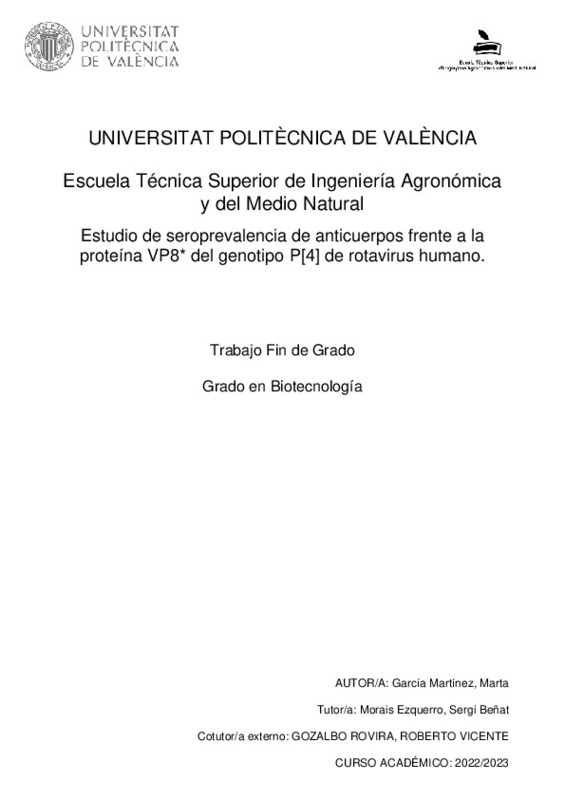JavaScript is disabled for your browser. Some features of this site may not work without it.
Buscar en RiuNet
Listar
Mi cuenta
Estadísticas
Ayuda RiuNet
Admin. UPV
Estudio de seroprevalencia de anticuerpos frente a la proteína VP8* del genotipo P[4] de rotavirus humano
Mostrar el registro completo del ítem
García Martínez, M. (2023). Estudio de seroprevalencia de anticuerpos frente a la proteína VP8* del genotipo P[4] de rotavirus humano. Universitat Politècnica de València. http://hdl.handle.net/10251/195305
Por favor, use este identificador para citar o enlazar este ítem: http://hdl.handle.net/10251/195305
Ficheros en el ítem
Metadatos del ítem
| Título: | Estudio de seroprevalencia de anticuerpos frente a la proteína VP8* del genotipo P[4] de rotavirus humano | |||
| Otro titulo: |
|
|||
| Autor: | García Martínez, Marta | |||
| Director(es): | ||||
| Entidad UPV: |
|
|||
| Fecha acto/lectura: |
|
|||
| Resumen: |
[ES] Los Rotavirus son la principal causa de gastroenteritis vírica aguda en lactantes y niños menores de cinco años a nivel global, siendo responsables de una elevada tasa de mortalidad y morbilidad en países en vías de ...[+]
[EN] Rotaviruses are the leading cause of acute viral gastroenteritis in infants and children under five globally, responsible for high mortality and morbidity rates in developing countries. Their genetic material consists ...[+]
|
|||
| Palabras clave: |
|
|||
| Derechos de uso: | Reconocimiento - No comercial - Compartir igual (by-nc-sa) | |||
| Editorial: |
|
|||
| Titulación: |
|
|||
| Tipo: |
|
recommendations
Este ítem aparece en la(s) siguiente(s) colección(ones)
-
ETSIAMN - Trabajos académicos [3541]
Escuela Técnica Superior de Ingeniería Agronómica y del Medio Natural







